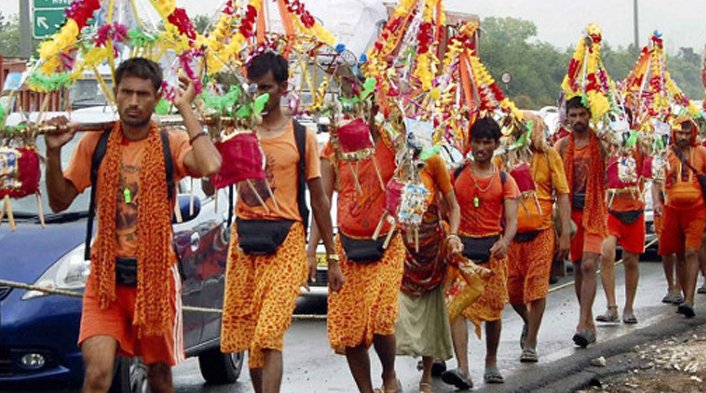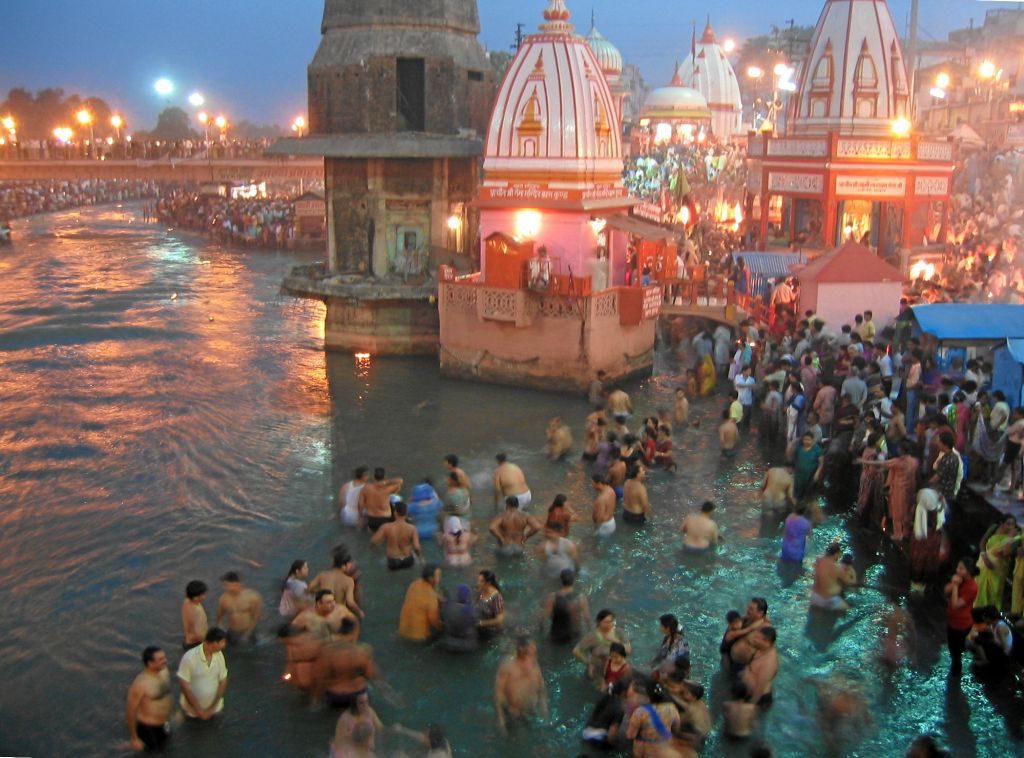Why is it becoming more and more uncomfortable to live within one’s own country, among people that we took for granted shared our view of the world? 2014 marked the year in which family and friends turned into aliens and opponents. Conversations invariably broke down at the point where Narendra Modi was seen as the great white hope for India. No logic worked against a recitation of the wrongs of UPA 2, plus AAP not being mature enough or ready, plus the magic word – ‘Development’ that a likely BJP government was going to deliver. One’s misgivings about Hindutva had to remain as mere mutterings, among the pitying looks of cousins and siblings.
Now 2017 has arrived as the year in which it is impossible to be in a crowded airport or railway station without wondering how many of the people around you will look on with interest at a mob lynching some innocent, and perhaps even justify the act with arguments if you dare to protest. After all, on social media, it is educated and articulate people who are trolling any criticism of hyper-nationalism or Gauraksha. The deep discomfort in crowds of any sort makes me wonder if I am having a serious mid-life crisis, or my country has changed into something so unrecognizable that I have begun to believe the worst of my neighbours and acquaintances.
My being a believer has fed much of my work, producing books on pilgrims and seekers, and finding faith resilient in the poorest toymakers and street vendors. Yet, today, I have also become uncomfortable with the religion I was born into because I feel no identification whatsoever with those who are making loud claims in the name of that religion with no regard for facts, truth, or the feelings of their fellow citizens. And, although this is a mere blip in our ongoing relationship, I have also begun to express increasing discontent and despair to my personal God in the face of what I perceive to be evil getting increasingly rewarded around me.
So many questions confront me on any given day. Was a bottomless reservoir of hate and bigotry always present amidst our people? How do today’s lynch mob leaders tap into this with a single WhatsApp message and collect an instant crowd? How many who go by the label ‘Hindu’ actually rejoice at the wounding or death of a Muslim fellow citizen in our country? Visceral questions, with no easy answers.
Till a few years back, crowds meant something else for me. As I walked with Varkaris to Pandharpur, joined the immense human congregation at the Mahakumbh in 2001, met kaanwariyas at the Haridwar Shravan mela and at Deoghar in Jharkhand, climbed to Tirupati and Vaishno Devi, I saw the transformative power of collective faith. Caste distinctions recede on such pilgrimages, when the fellow believer begins to be called by a generic name – ‘Mauli’ on the way to Pandharpur, or ‘Bam’ on the way to Deoghar. Sharing of resources, helping others when they are weary or tired, breaking into a song of prayer together, all this is behavior that is par for the course on such journeys. All the years when I walked alongside them, I never saw the crowds of the faithful as potential murderers.
And yet, from recent events, it is obvious that some of the killers of Akhlaq and Pehlu Khan may also have been pilgrims at some point. As I think of the kaanwariyas carrying water and walking hundreds of kilometres, I can’t help but wonder at whether the ordinarily devout, the Durga Puja attendees and katha organizers have become members of predatory mobs?
Any attempt to answer this question must undoubtedly make us reflect on why we have failed to strengthen the secular fabric of India. Prof. Ashis Nandy, who wrote An Anti-Secularist Manifesto in 1995, and who writes in his seminal essay The Politics of Secularism and the Recovery of Religious Tolerance, “I call myself an anti-secularist because I feel that the ideology and politics of secularism have more or less exhausted their possibilities”, has unpacked the concept of secularism painstakingly in the Indian context. Pointing out that religions in our part of the world have become split into religion-as-faith versus religion-as-ideology, he describes the latter as a “subnational, national, or cross national identifier of populations contesting for or protecting non-religious, usually political or socio-economic, interests.” For me, the religion as faith that I encountered as a pilgrim was distinct from the religion as Hindutva ideology that I abhor. The fudging of both by the SC verdict in the Manohar Joshi vs. N.B. Patil case in 1995 made it appear as if Hindutva was the sum of many cultural practices and beliefs, posing no threat to non-Hindus. But as we have seen so clearly in recent years, de facto Hindutva means aggressive posturing on the ground to pursue a nationalist agenda and protect distinct political and socio-economic interests.
If secularists have been unable to make such distinctions clear in the minds of citizens and voters, it is futile to once again hold Amit Shah and Narendra Modi responsible. Instead, it is clearly a result of secularists’ refusal to engage with questions of faith and identity in any meaningful way. To many, religion and the way it is expressed around us seems too messy or backward to bother with. When I wrote in my books about the visible expressions of faith I had experienced first-hand, I often had friends wonder why I found the melas and the kaanwariyas so fascinating. Modernity, a desire for development, and a secular outlook means for many in my social milieu a complete disregard for the inconvenient, bedraggled, jugadu hordes of poor pilgrims struggling to reach temples and deities and holding up traffic in the NCR.

For such people longing for a ‘developed’ India that will leave all such messy struggles behind, a vote for Modi in 2014 actually meant a vote for an increased role for the private sector without the ball and chain of environmental safeguards dragging down corporate India. The rights of tribals and displaced communities, the increased disparities of income and the contrasts in urban India between utter comfort and utter despair didn’t cause upper middle class urban Indians to lose much sleep. As a society we have lived for far too long with the twin evils of entitlement and deprivation, and nothing in our environment encourages us to think beyond the interests of our family, caste, or class. Protecting secular discourse was not a priority for too many, unless it represented an attack on their own personal freedom.
Today when I share with my journalist friend Rahul Pandey a frustration with the lack of any political opposition to the tactics of the BJP, he says, “Na Ram hai, na Bam, sab chhalava hai.” (There is neither Ram, nor the Left, it is all wholesale fraud and deception.) He refuses to accept that the BJP is winning elections only on the basis of their WhatsApp armies. “Why would WhatsApp work without any real work being put in?” he asks me. “The VHP have gone door to door, in village after village in UP, and tied dharm-raksha-sutra (Save your faith bands) around the wrists of lakhs of people in their homes. Which party can claim such cover? The Sanghis have conducted Swachhata Abhiyan (Cleanliness campaigns) in village after village. Their workers and volunteers remain visible to the public at all times. This is what makes their WhatsApp mobilization work.”
The Sangh and its affiliates have also perfected the art of silent communication at religious events with a cultural significance. My activist friend Arvind Murti says, of a recent event around the Thrissur temple “I was there recently on an occasion where at least fifty thousand people were present, and a host of cultural activities were being put on. Not a single political leader from either the LDF or the UDF was present. The only visible leaders were from the Sangh umbrella organizations. It made me acutely conscious of how secular parties are missing important opportunities for communication by disregarding such occasions and festivals.” I knew exactly what he was talking about because I have been at the chariot festival of Chennai’s Kapaleeswar temple, when thousands of people converge in Mylapore in a completely apolitical celebration. However, the volunteers of VHP are still milling about among the people, distributing water and butter milk sachets. Somewhere, in interpreting secularism as a lifestyle that shuns the mention of God or religion, secular parties and leaders have distanced themselves from cultural practices that deliver their countrymen to the Sangh without protest or effort.
For Prof. Ashis Nandy, secularism and tolerance can only be recovered by re-connecting with the ideals of faith, not by denying them. He points to Gandhi as the believer whose compassion and tolerance stemmed from his religion, not in spite of it. For millions of poor Hindus, who have felt excluded from the prosperity of their secular, modern fellow citizens, the Sangh gives honorifics and titles that bring a role of prominence as an anti-Romeo squad member or a Gau Rakshak. Such actions may actually be bringing these people a legitimacy whose importance we are unable to comprehend from a position of eternal privilege. If secularism’s goose is not to be well and truly cooked in India we have to prepare to move once more among our people and ask them the questions that matter. For this, it seems, we can depend on no political leader or party.
So if we are to reclaim the ground we have ceded to those who always talk of ‘hurt sentiments’ and explain each violent mob attack as an expression of the people’s emotions, we need to attack the idea of Hindus as victims. We need to bring such questions as the ones below in the public domain, whether through Whatsapp, social media or conversation. The idea of the majority community being victims in their own homeland is the biggest falsehood of the Sangh, being used to perpetuate fear and hatred in equal measure. ‘Have you ever been stopped from worshipping your favourite deity, or doing pooja in your homes?’ is something we can ask fellow Hindus. ‘If not, why do you feel insecure in your own home and country?’
‘Who are the people telling you your homes are in danger, your women are in danger? Don’t you believe your God is powerful enough to protect you and your family? Why then pick up arms and who do you want to attack?’
‘When you rush to attack and kill, whether for money/recognition/reward, don’t forget that you will have to account for it before your God. Yeh kaun sa Bhagwan hai jo kisi insaan ko maarne ke liye majboor kar raha hai? ‘
No great knowledge of religion or scriptures is needed to counter the majoritarian poison of the Sangh. All it needs is nudging the people to tap into their own faith of God being their protector, not the other way around. After all, in the crowds of pilgrims I used to travel with, each was seeking his or her own liberation, however hard and arduous the journey was.
Unfortunately, around a bend in the path and in our nation’s history, many of these seekers met not the God who would provide ‘mukti’, but the politician who demanded eternal slavery of mind and soul.
So are we, privileged and educated Hindus, up to having these conversations among ourselves?
Originally published here.


Very true